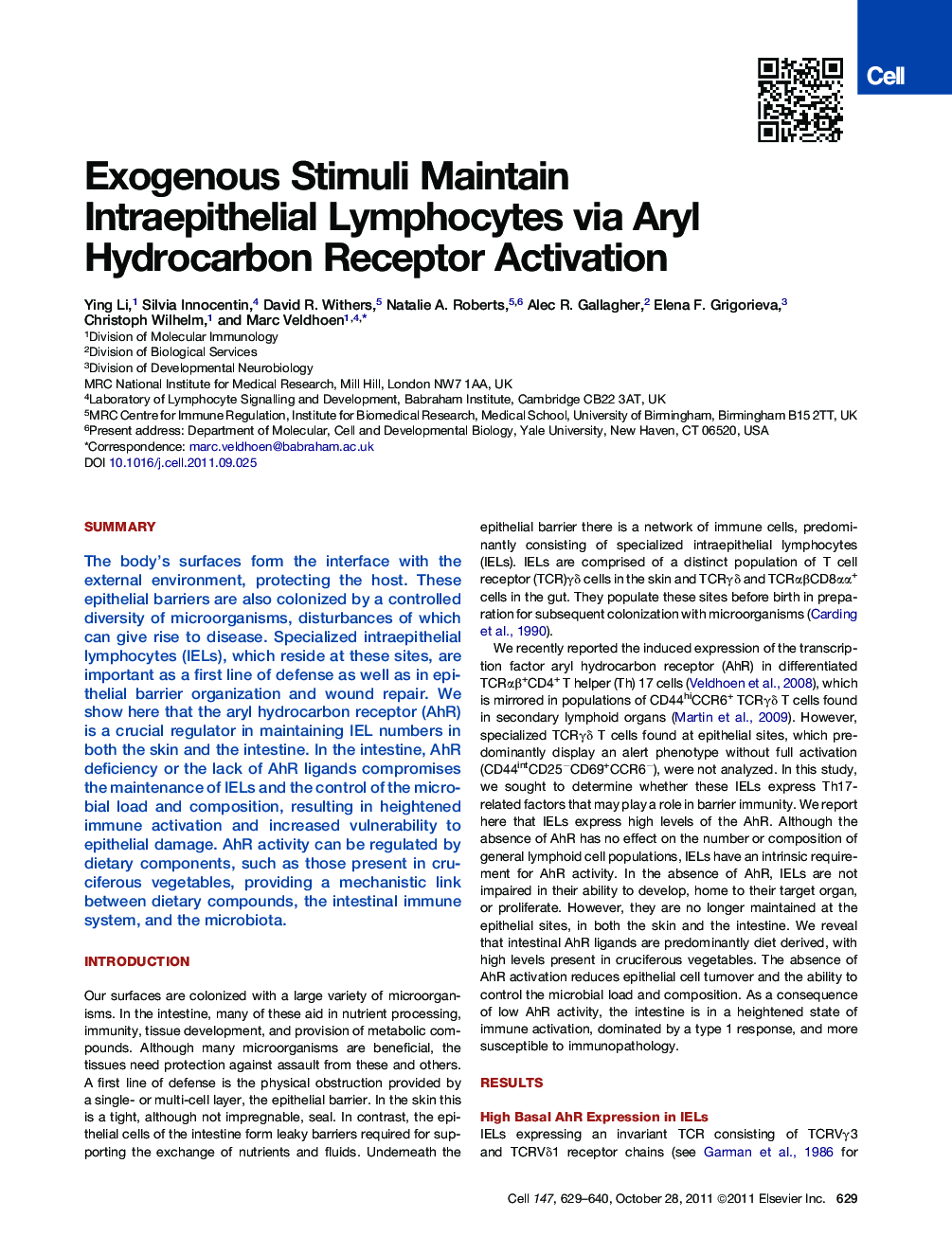| Article ID | Journal | Published Year | Pages | File Type |
|---|---|---|---|---|
| 2036159 | Cell | 2011 | 12 Pages |
SummaryThe body's surfaces form the interface with the external environment, protecting the host. These epithelial barriers are also colonized by a controlled diversity of microorganisms, disturbances of which can give rise to disease. Specialized intraepithelial lymphocytes (IELs), which reside at these sites, are important as a first line of defense as well as in epithelial barrier organization and wound repair. We show here that the aryl hydrocarbon receptor (AhR) is a crucial regulator in maintaining IEL numbers in both the skin and the intestine. In the intestine, AhR deficiency or the lack of AhR ligands compromises the maintenance of IELs and the control of the microbial load and composition, resulting in heightened immune activation and increased vulnerability to epithelial damage. AhR activity can be regulated by dietary components, such as those present in cruciferous vegetables, providing a mechanistic link between dietary compounds, the intestinal immune system, and the microbiota.PaperFlick To view the video inline, enable JavaScript on your browser. However, you can download and view the video by clicking on the icon belowHelp with MP4 filesOptionsDownload video (11216 K)
Graphical AbstractFigure optionsDownload full-size imageDownload high-quality image (354 K)Download as PowerPoint slideHighlights► Intraepithelial lymphocytes (IELs) reside at epithelial barriers (skin and intestine) ► IELs express high levels of the aryl hydrocarbon receptor (AhR) ► AhR activity is required cell autonomously for the maintenance of IELs ► AhR activity can be regulated by dietary compounds, found mainly in vegetables
